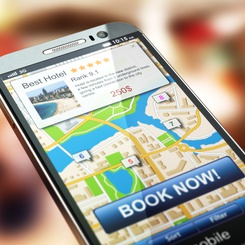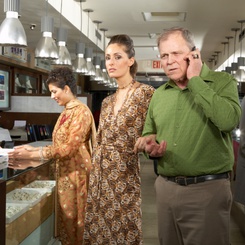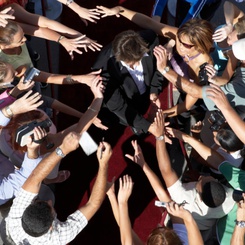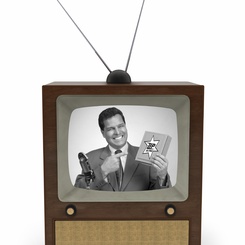Drawing on his in-depth study of the French success-story Michel et Augustin, Frédéric Oble, Professor of Marketing ESSEC Business School, provides us with insights into what the little brands can do to rival with the giants without spending millions.
As an entrepreneur, motivated by an unswerving belief in your project, you worked days, nights and sometimes weekends to get your business up and running. You receive initial backing from the bank and maybe even put your house on the table as a guarantee. And after a short while, all that personal investment pays off. Your business grows, you build a reputation in the local area – and sales take off.
The next step? The need to get your products or services to a wider, national, or maybe even international consumer base. Problem: the hefty marketing and communication costs involved. Take a look at the advertising agencies and their portfolio of clients and you will soon see that mostly only the giants can afford it – the telecom companies, the automobile constructors, the multinational agro-food brands.
The Michel et Augustin brand story went a little like that. Today, this French company that co-founders Augustin Paluel-Marmont and Michel de Rovira began in 2004 by baking cookies in their own oven and then those of local bakeries, is recognized as one of the biggest entrepreneurial and marketing successes in France. Indeed, despite their still small size, they have managed to muscle in against the giants on the shelves of select stores, supermarkets, targeted food stands and even the buffet compartments of France’s high-speed trains, the TGV. So how did they make something small in size into something big in punch?
3 fundamentals for the small fry to make it big
The first golden rule is to be different from the big groups. Or, as co-founder of Michel et Augustin, Michel de Rovira, would say: be ultra-different! Selling the same sort of products, with the same sort of message and packaging and in the same places would simply make your entrance into the fish pond…invisible to the final customer.
Drawing from his work and analysis of the company, Frédéric Oble identifies three striking factors of differentiation for the brand, the first and foremost being focused on the most important factor of all – the product. In Michel et Augustin’s case, the products have deliberately been developed to be simple, healthy, and tasty – the sort of thing, insists Michel de Rovira, that you’d have found in your grandmother’s larder. If your business focuses on products and services in a different sector, the same rule might apply: being simple doesn’t necessarily mean it can’t breathe sophistication, for example. Take a look at designer furniture and household goods, for example, and the stripped down, clean cut lines that exude both simplicity and classiness all at once.
Second, brand value: in the Michel et Augustin success story, inspiration was drawn from the Ben & Jerry’s adventure to naturally focus the business on pleasure, fun, proximity and transparency. Here again, it may be a little challenging to use the fun aspect if your business is funeral services or selling hip prosthesis (although some undaunted professionals in the US are already beginning to market the ‘beyond’ as an occasion to say farewell with a smile). However, pleasure and fun could be substituted by the brand value of customer care or customer delight – that is, going above customer expectations to provide personalized, and sincere service – as is the case in luxury hospitality.
And finally, eliminate the barriers between you and your customers. Or, in other words, foster proximity. Frédéric Oble coins this ‘agile marketing’ – letting people taste and test products; relying on fans to convey the message. Not only the barriers but also the filters that keep your product away from the consumer: it is quite common for the giants to use the word proximity while not meeting their consumers. And clients know this – so be different and walk the talk. Meet them, talk to them and involve them. In the Michel et Augustin case, this means creating a community of friends through inviting consumers to open days at their headquarters, letting them see, taste and feel the products, and inviting them along to workshops and events in stores such as their “Pass your cake-maker’s certificate with us” or the “Four Golden Cows” event, a parody of Charley and the Chocolate factory. Get close, build ties – and be sincere. And you will not only gain loving customers ready to buy and ready to spread the word, but, as was the case with Michel et Augustin products in Starbucks in the USA, also a community ready to support the brand in its development.
Communication strategy for the minnows
Part of marketing is communication. And every company, big or small, must communicate or fade out of the screen altogether. But when you haven’t got millions (or even thousands) to spend on it, what do you do? As mentioned above, meeting your customers and letting them spread the good word is a first and highly effective means with which to create communication. But there are other ways – equally as effective in driving your message and creating a buzz for your products.
First, come the social networks and the potential viral communication that comes with them. Cost-effective marketing and communication tools include e-mailing campaigns, newsletters – in Michel et Augustin’s case, the “Banana Leaf” which is published once a month – Facebook, and thousands of views via Twitter. The company is also now launching into marketing initiatives via LinkedIn and the French social network, Viadeo. This choice of means of communication not only reflects a strategy of keeping costs low for a maximum visibility, but also coincides with the company’s wish to communicate in real time about what happens at the headquarters, La Bananeraie (the ‘Banana Plantation’).
And why not think of the alternatives to television and billboard advertising – both extremely expensive media? Think back to…the radio. Back in the 1980s there was a chart-topping song called ‘Video Killed the Radio Star’ by a certain Trevor Horn and Geoff Downes, alias Buggles. Their worry couldn’t have turned out more paradoxical: radio is bigger now than it ever was. In their communication strategy, Michel et Augustin tapped into this source, transforming the company into a regular storyteller, notably on radio BFM TV. Another traditional medium – the press – was also targeted as a means to market the story of Michel et Augustin with many journalists picking up on the home-grown entrepreneurial adventure.
Make it attractive, make it unique, make it irresistible
An important visual part of the success of Michel et Augustin’s marketing strategy also lies in the use of the company’s packaging, itself an original and differentiating factor with its bright colors, cartoon images, catchy slogans, jokes and taste bud-teasing flavor mixes that set their products apart from those of their competitors. Managed internally through an in-house graphic artist, such visually different packaging is an atypical means of communication that immediately catches the eye and provides an optimized-cost, sole vector for multiple messages.
Bringing fun into business
Finally, a last and very effective aspect to achieving maximum visibility and buzz for a minimum of layout is putting fun and eccentricity into your marketing – physically. Not for the shy, nor perhaps for certain product and service categories, this also means having to be natural and sincere in the effort: otherwise your customers will quickly see a trap behind the bravado. The co-founder of Michel et Augustin are not afraid: they have dressed up as cows, strutted about in the strict minimum of clothing, and posed upside down in supermarket shelves covered in yoghurt and chocolate mousse. In France, such behavior is also atypical and almost certain to trigger the word-of-mouth effect. Top British CEO Richard Branson might also serve as a model, launching Virgin Mobile not by advertising in the press but by climbing down the façade of his building on the Champs Elysées. This initiative, among many, managed to earn him the first page of several newspapers the following day. As Michel de Rovira of Michel et Augustin quotes: ‘Advertising is a tax you pay for unremarkable thinking’. He couples this with another saying: ‘Wave your imagination; don’t wave your wallet.’ That, for the minnows in the pond wishing to swim with the big fish in the sea, is wise advice indeed.
The Michel et Augustin case study series









